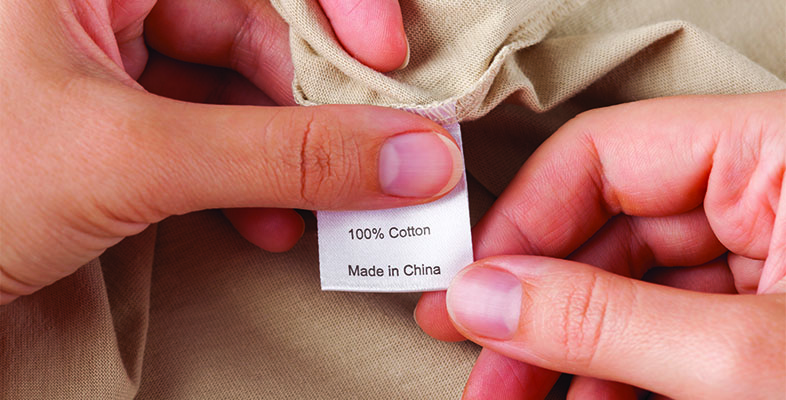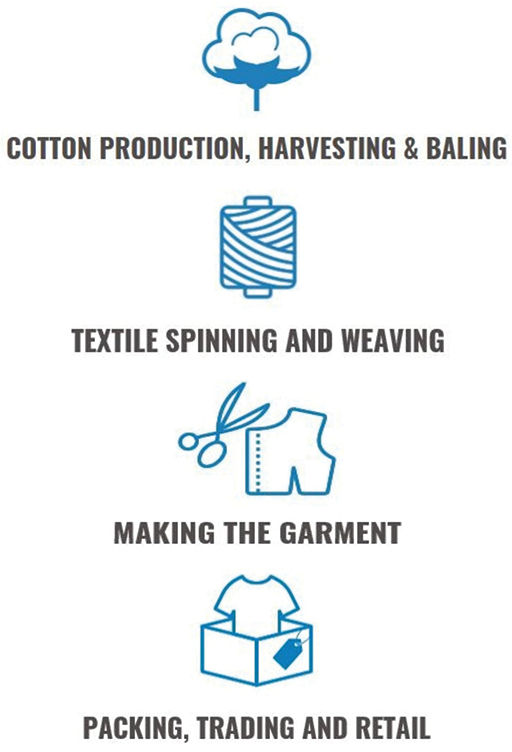1.2 The supply chain of a t-shirt
Whichever retailer we buy our t-shirt from, whether it is an online retailer, a supermarket, market trader or high-street shop, it is likely our t-shirt is part of a supply chain that includes several firms.
Activity 4
Consider the process of making a cotton t-shirt. This starts with growing cotton plants on a farm to make cotton fibres. Once the cotton fibre is harvested it can be turned into a yarn and woven into fabric. This fabric is cut and sewn to produce the t-shirt, which is then distributed to retailers to sell to the final consumers. Use this information to create a supply chain for a cotton t-shirt.
Using the following two lists, match each numbered item with the correct letter.
-
Retail
-
Spinning and weaving
-
Cotton production
-
Making the garment
a.Second
b.Fourth
c.Third
d.First
- 1 = b
- 2 = a
- 3 = d
- 4 = c
A cotton t-shirt is a cheap, lightweight product which is not fragile. This suggests that it is easy and inexpensive to transport. As a product it has a simple design which is easy to convey to workers elsewhere. There is less need to be continuously checking design and quality. The t-shirt is therefore a commodity which may be easily moved from one firm to another or one country to another so that its supply chain can involve many firms and many countries.

